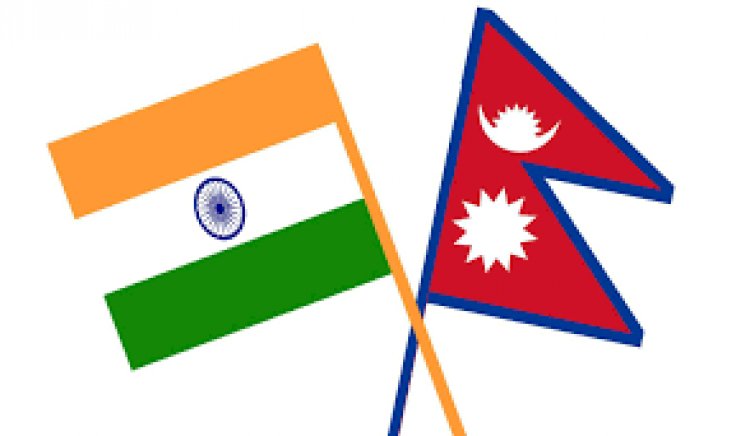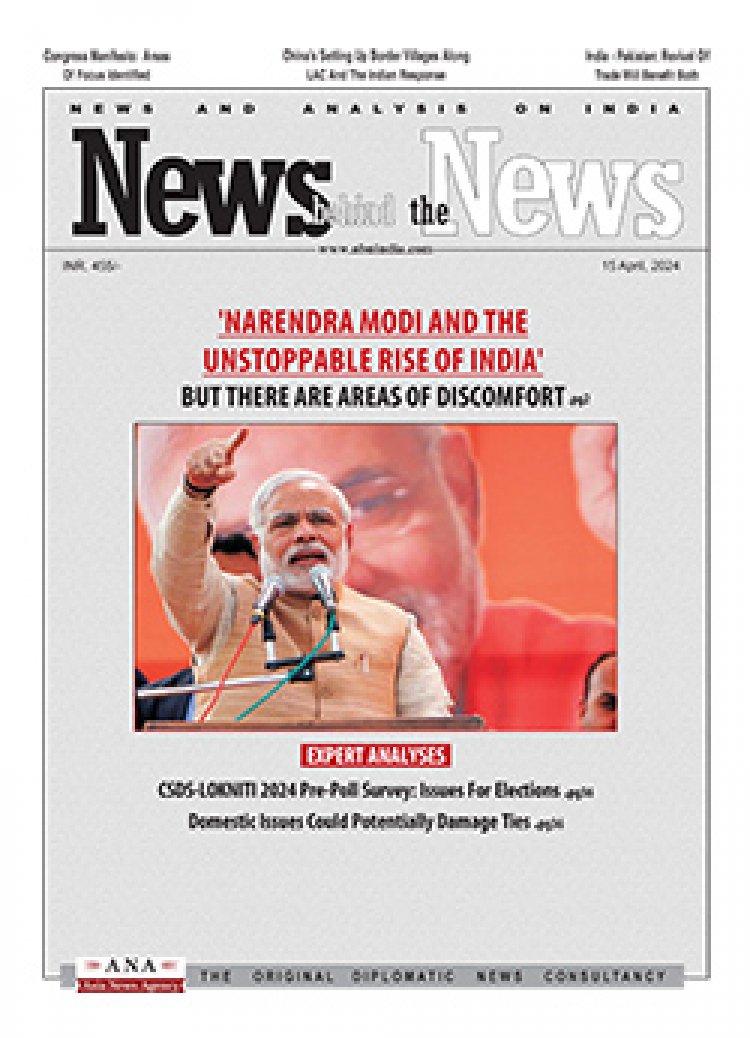India - Nepal: Soft Diplomacy Offensive by India
STORIES, ANALYSES, EXPERT VIEWS

Prime Minister Narendra Modi was on a brief visit to Lumbini, Nepal Monday to participate in a ceremony to lay the foundation stone for a centre for Buddhist Culture and Heritage to coincide with ‘Buddha Purnima’ - commemorating the birth of the Prince Siddhartha Gautama, later the Gautama Buddha. Modi became the first Indian Prime Minister to visit Lumbini. He offered prayers at the Mayadevi temple, believed to be the Buddha’s birthplace, in the company of highly-respected Buddhist masters, and then laid the foundation for the International Buddhist Conference and Meditation Centre.
The focus was on bringing soft power to the centrestage of India-Nepal relations while also marking India’s formal presence at the holy site that’s barely 10 km away from the border.
First attempt to develop strong linkages with Nepal’s Buddhist heritage sites
The construction of the ‘India International Centre for Buddhist Culture & Heritage’ — to be undertaken by the International Buddhist Confederation (IBC), India, with financial support from the Ministry of Culture — is estimated to cost INR 1 billion and would take three years to complete.
This marks India’s first attempt to develop strong linkages with Nepal’s Buddhist heritage sites. The Indian Council for Cultural Relations (ICCR) signed two Memoranda of Understanding with Nepal — one on setting up the Dr B R Ambedkar Chair for Studies on Buddhism at Lumbini University and another on a Chair Professor at Kathmandu University.
India’s Ministry of Tourism has collaborated with Nepal to build the proposed trans-national Buddhist Tourist Circuit linking Lumbini with Kushinagar, Bodhgaya, Rajgir, Nalanda and Sarnath, among other centres linked to Buddha’s legacy. This will be in addition to the project to build the Ramayana circuit linking various sites in the two countries.
The visit, writes The Tribune “not only made for good optics but also reinforced the millennia-old cultural and spiritual bonds between the neighbours. Under PM Sher Bahadur Deuba, who took charge in July last year, Nepal is witnessing a spell of political stability after being in turmoil for several months due to a fierce power tussle. Spurred by these favourable conditions, the two nations Monday signed MoUs on cooperation in the sectors of culture and education, even as Modi and Deuba laid the foundation stone for the India International Centre for Buddhist Culture and Heritage, which is expected to attract pilgrims and tourists from across the world. An agreement was signed between Satluj Jal Vidyut Nigam and the Nepal Electricity Authority for the development of a hydroelectric power project.”
Visit may not be enough to counter China
Modi’s trip, a month after Nepali Prime Minister Sher Bahadur Deuba visited India, is being projected as a ‘cultural visit’ but there are many who call it India’s late awaken ing from a deep diplomatic slumber. The visit comes decades after most foreign nations, including US, China, Canada, France, Germany and Thailand, among others, built their centres in Lumbini as an instrument of promoting Buddhist philosophy.
Almost a decade ago, China had offered to build Lumbini as a world peace centre at a cost of three billion dollars. China has also built a monastery in the core area of the Lumbini Development Project. China’s offer to develop it as the World Peace Centre and construct a railway line connecting Tibet and Kathmandu is as yet in abeyance, but not completely given up.
Delhi, writes Yuvraj Ghimire (senior journalist based in Kathmandu) “has been indifferent to the deep inroads China has been making in Nepal.” China’s presence and economic investments have “had an impact on internal politics and policy-making in Nepal. But unlike its competitors, China’s outlook had depth and took into account multiple dimensions. Lumbini, thanks largely to China, has now become sort of a microcosm of the competing international forces in the country."
How much Modi’s visit to Lumbini will make up for Delhi’s indifference is yet to be gauged. But, by befriending Deuba, PM Modi “has made an effective attempt to repair the damage in bilateral ties that took place between 2016 and 2021 when he and his then Nepali counterpart K P Oli fell out. India not only refused to welcome Nepal’s constitution promulgated in September 2015, but also launched an economic blockade for 134 days. Deuba, who is also the chairman of the Nepali Congress, recently accepted Modi’s invitation for his party and the BJP to establish fraternal relations — something the Chinese Communist Party tried with the unified Communist party of Nepal. Modi’s visit to Lumbini and the laying of the monastery’s foundation may give India a foothold and cultural space. But that provides zero guarantee that it will be able to outdo its competitors, including the West and China, who are already deeply entrenched in Nepal."
Onus on India to reduce Nepal's dependence on China
The Tribune writes “it’s not possible to keep China out of the equation. Beijing has been helping Kathmandu set up mega infrastructure projects through financial as well as technical assistance. PM Modi’s visit coincided with the inauguration of the $76-million Gautam Buddha International Airport by his Nepalese counterpart. The airport, located barely 20 km from Lumbini, has been built by China’s Northwest Civil Aviation Airport Construction Group. Notably, the PM reached Lumbini on a special IAF helicopter from Kushinagar (Uttar Pradesh), bypassing the new airport that bears the Chinese stamp.
“While his predecessor KP Oli was a China-friendly ruler with a knack for provoking India, Deuba has been shrewd in his dealings with Beijing as well as Delhi. Nepal has been forthright in expressing its apprehensions regarding projects planned or executed under China’s ambitious Belt and Road Initiative. Such assertiveness gives Delhi leeway to step up investments in the Himalayan nation in order to catch up with the Chinese. The onus is on India to reduce the old ally’s dependence on China through stronger partnerships in fields such as trade, energy, infrastructure development, arts and culture, and education. India’s soft power can give Nepal respite from the Dragon’s overbearing influence.”
Message to China
The PM’s trip to Nepal also signals something interesting, according to Jyoti Malhotra (senior consulting editor at ThePrint). “In the wake of India reaching out to Sri Lanka and helping it out in its hour of economic and political crisis, New Delhi is now demonstrating its ambition in its neighbourhood in the north – that it will not allow China to expand its sphere of influence in a region it calls its own.
“Modi’s trip to Lumbini acknowledges that India has lost time in this reassertion. The Chinese airport in Bhairahawa has been built – that cannot be reversed. But if New Delhi can reclaim and underline the soft power linkages across the Terai….. also through the steps of the Buddha, and showcase its determination to create joint prosperity for both nations, it would be teaching the Chinese a thing or two in its own game.”
The China shadow & boundary issues
But, writes Jayant Prasad (former Indian envoy to Nepal and Afghanistan and has served as the Director General of Institute for Defence Studies and Analyses) “restoring the erstwhile entente between India and Nepal will require both countries to address some vexing legacy issues.”
One such is the 1950 Treaty of Peace and Friendship, which has long been a thorn in the relationship. India is willing to consider reviewing, modifying, or updating the Treaty in line with the requirements of the 21st century. Since the year 2000, several India-Nepal joint statements have tasked the foreign secretaries of India and Nepal to review all issues concerning the Treaty.
“Although Nepal must maintain good relations with China, most of Nepal’s social and commercial exchanges remain south-oriented. India provides Nepal with essentials like petroleum, electricity, fertiliser and iodised salt. Nepal’s exports to China are less than 5% of its imports from China (in contrast, India imports over 10% of what it exports to Nepal).”
And “unlike Nepal’s other partners, including India, China does not provide much grant assistance to Nepal. Stepping up its investments and development partnership in Nepal will allow India to address the China factor.
“Deuba has a difficult inheritance on the Kalapani boundary issue because Nepal’s previous regime vitiated it by altering maps and making exaggerated claims. Deuba has proposed a resolution through a dialogue mechanism. Only 2% of the India-Nepal boundary remains to be settled. Differences exist only in the areas of Kalapani and Susta.
“India settled its land and maritime boundaries with Bangladesh, in which larger territories and exchange of population were involved. India and Nepal can resolve their boundary issues should both sides have the will to do so.”
There is some urgency in getting India-Nepal relations back on the rails, says Prasad. “Nepalese parliamentary election is due by November this year. Its outcome will determine much of the future trajectory of India-Nepal relations.”
















